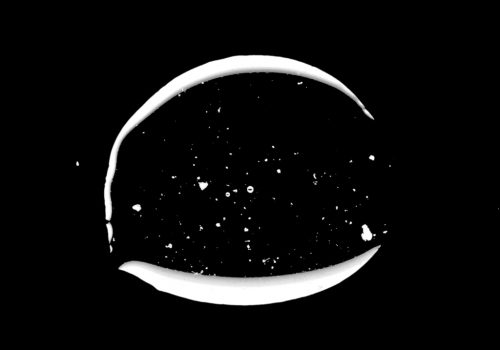Natten (night in Swedish) is a harsh and poignant book about mourning and the inevitable self-transformation it produces. A witness to the death of her alcoholic brother, the French photographer Margot Wallard tries to put this experience this incredibly violent experience into perspective by dissecting all the complex emotions that course through it. How could she tolerate this loss that stripped away part of her. How could she resist this heartrending experience , faced with the sudden emergence of an unacceptable truth. At the risk of seeing her life story remaining forever incomplete,, the photographer has to find a creative outlet for her suffering; to extract from the very core of her penance new material that attests to her individual existence.
The darkness and the silence make the thousand small effects of her grief palpable. The pain becomes the medium through which she reaches the world anew. It has a to be a place big enough to contain her anger, secret enough to dress her wounds and silence her inner racket. She decides to move with her partner, the photographer J.H.Engstrom to an isolated hamlet in the west of Sweden. With its vast forests of silver birch and pine trees dotted with frozen lakes and mossy clearings, Värmland will be her “terra Incognita”. In a desperate attempt to hold on to the edge of a mind that continues to fall apart, to scatter, Margot Wallard turns the lens back on herself, committing to film the slips and faux pas that mark out this slow return to life. Day after day she struggles with bad luck still fresh in her memory.
In the wild heart of the forest, a silent war unfolds that never ends. A disturbance of resin and flesh, of blood and earth. Of her body, both vulnerable and powerful, she makes a battlefield or a farewell song. She collects leaves, rocks, animal corpses, dead insects, in a quasi-obsessional way like others blacken the pages of a private journal. Returning home, she examines this odd booty and scans the best pieces. Documenting reality in its purest and most honest form helps her, she says, to understand life and death better. This ritual is repeated throughout the seasons. The cold deadens some pains and awakens others. The wear and tear of the soul responds to the wear and tear of the sky. And the camera is the only means that is left for her to communicate posthumously with her brother Guillaume.
If the book takes the shape of a natural history encyclopaedia, it doesn’t yield to the rigid classification system that characterises this kind of work. The images, organised into chapters that follow the artist’s emotional progression, exude an understated lyricism. Insects transformed by the scanner into a translucent squadron, dead animals whose glassy eyes seem to implore us from behind their lazy eyelids, alternate with the landscapes, ice crystals in sculptural shapes, and ghostly self-portraits.
It is all a precarious world of infinite murmurings that spread out from nowhere. In the last portraits, the young woman displays a round belly. A new cycle begins. Life embraces death again and again. While it is difficult to refute the cathartic dimension, Margot Wallard’s work resounds well beyond her personal experience and questions our incapacity to embrace fully the mystery of our fragile condition,
Cathy Rémy
Cathy Rémy has been a journalist with Le Monde since 2008 where she is dedicated to discovering the work of young photographers and emerging visual artists. Since 2011, she has been a contributor to M Le Monde, Camera and Aperture.
Margot Wallard, Natten
Published by Max Ström
$50 / 40€
















